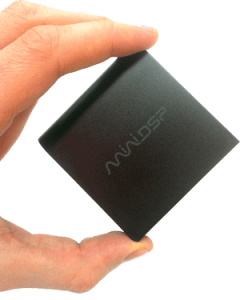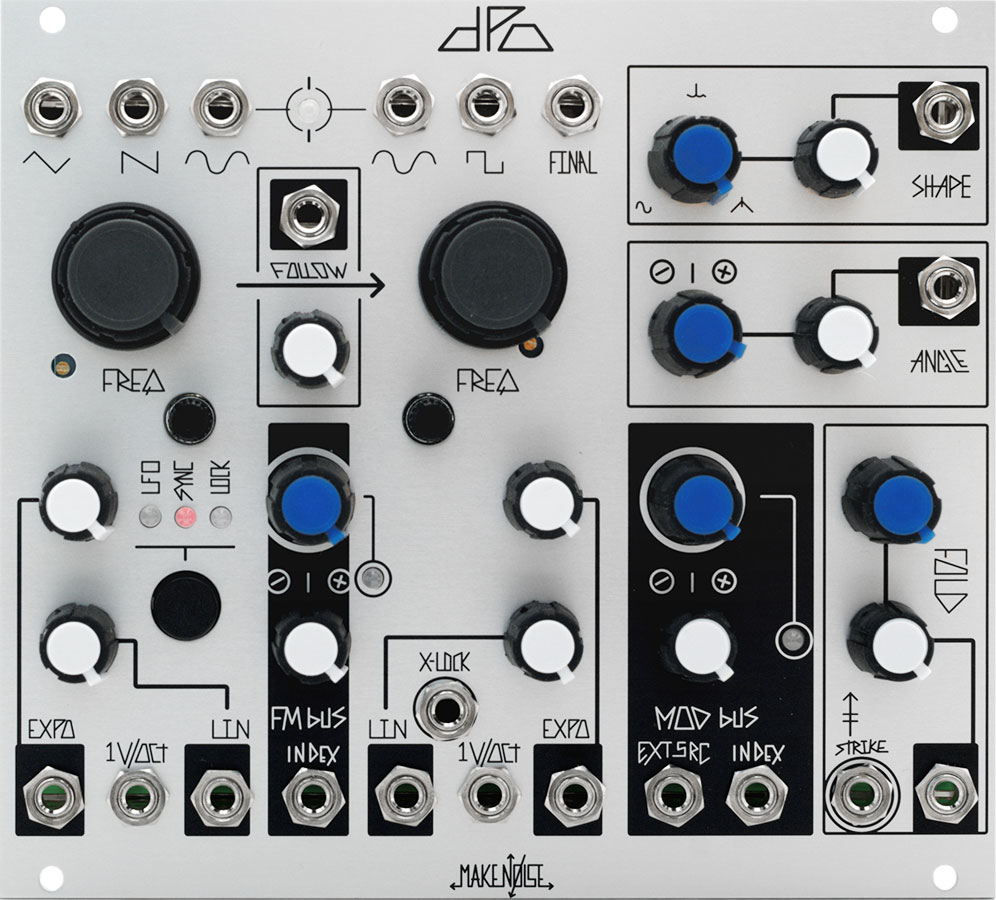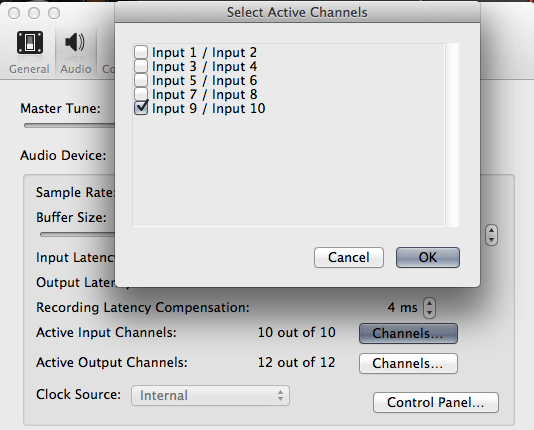So I’ve been studying the MIDI-CV conversion some more and found some references to a company called Expert Sleepers. Untangling what their product was and what it does and what the benefits were took a little time but the end result is that the cost of my interface just doubled. What you don’t know can’t bankrupt you, eh?
I’ll start with the conclusion because I’m sure you’re impatient types, and the rest of it is a bit involved. I’ll be getting an Expert Sleepers ES3 ADAT-CV converter module instead of a MIDI-CV converter. The ES3 module connects to my computer using ADAT and gives me 8 analogue outputs in the modular. The outputs can be used to get audio as well as CV into the modular. Controlling the ES3 at the computer end is a Rack Extension to Reason called the Silent Way Voice Controller which allows me to send basically anything in Reason to the modular, including gate and CV from modules in the Reason rack. The downside to this is that I need an ADAT interface since my sound card doesn’t have one.

Sound and CV signals are both represented by voltages in an analogue synth. In the Eurorack system audio signals go from -5V to +5V, CV signals go from -2.5V to +8V and gate signals go from 0V to +5V. These are close enough that you can connect an audio output to a CV input and vice-versa without exploding things and this flexibility is one of the beauties of a modular synth.
Expert Sleepers made the (like all great ideas rather obvious in hindsight) observation that since audio and CV signals are so similar, a sound card should be able to act like a CV-generator as well as a sound generator. They have produced a suite of DAW plug-ins called “Silent Way” that generate CV/Gate signals using a sound card which allows users to use spare audio outputs as CV generators. This means that you can control a modular synth (or any CV-controlled instrument) without having to buy a MIDI-CV converter.
In practice there was one problem with this scheme. Since audio consists of an alternating current signal — an AC signal — most audio interfaces are “AC-coupled” which means that they will block any non-alternating signal. They cannot output a constant voltage level. CV signals do not have the same alternating behaviour as audio, they have to maintain an even voltage level, and this means that they cannot be generated by a AC-coupled audio output. There are some audio interfaces that are “DC-coupled” which means that they can output constant voltage levels, and those interfaces worked with the Silent Way plug-ins. Audio outputs also have a tendency to be used for stuff, so it’s perhaps not terribly common that people have 3-4 extra unused audio outputs. To make the Silent Way system easier to use Expert Sleepers have produced a range of hardware modules that can generate DC-signals.
I say “range” and it sounds very structured but the initial impression is one of befuddlement. Expert Sleepers have 12 different modules with some only working as expansion modules that have to be connected to other modules in the range. But once you get your head around how the system works things become much clearer. All modules take an audio signal and does something with it. There are four basic modules that takes audio output from the computer and converts them modular-level voltages. Which one you want depends on the type of audio connection your computer has. The ES-1 takes up to 8 analogue audio inputs, the ES-3 takes 8 channels of digital audio through an ADAT input, and the ES-4 and ES-40 takes 2 channels of digital audio through a coaxial S/PDIF input. Both the ES-4 and the ES-40 multiplexes CV signals on top of the S/PDIF stereo signal. The ES-4 can handle 5 channels of 8-bit signals. The ES-40 doesn’t output anything but works as a base for a range of expansion modules.
To go the other way and bring signals from the modular into the computer there are two options. One is the ES-2 which takes modular-level inputs and converts them to line-level analogue outputs. The other is an expansion module to the ES-3 ADAT interface called ES-6 which converts 6 channels of modular-level signals into ADAT outputs.
There’s a bunch of expansion modules that connect to the base modules and provide extra inputs and outputs. The key thing to realise is that for audio, you want a full resolution signal (usually). For example. 16 bits per sample at 44.1kHz, or 24 bits per sample at 48kHz. But for CV this can be overkill. An 8-bit signal at 44.1kHz might be sufficient for envelopes etcetera (although this is debatable, it is possible to hear stepping effects with 8-bit resolution). For Gate signals it is _definitely_ overkill. A Gate is a binary signal so anything above 1 bit per sample is just pure waste. Expert Sleepers utilise this to get more channels out of the basic audio connections. For example, you can buy the ES-5 module which connects to a ES-3 ADAT module and uses one stereo pair of the 8 available inputs on the ES-3 as a “virtual channel” over which it provides 8 gate channels (and potentially even more with further expansion modules). The “virtual channels” require the audio to pass through a software plug-in for multiplexing while the normal channels can be used to get pure audio inputs into the modular directly.
The upshot of all this is that the Expert Sleepers system is expandable, very flexible and slightly confusing. Just like a modular synth!
I’m sold on the ES-3 ADAT module. It gives me 8 high-quality audio channels that can be flexibly used as audio, CV or gate outputs from the computer to the modular. The timing of the generated signals are sample-accurate; a lot better than an analogue MIDI-connection would allow. The Silent Way rack extension for Reason seems to make it really easy to use modules in the Reason rack as CV/Gate sources in the analogue modular. If I want a clock signal or an LFO or even an envelope I should be able to generate those in Reason and get them into the modular with a high level of accuracy.

Finding an affordable audio interface with an ADAT port was a little tricky. ADAT interfaces are mostly present only in the fancier models and those invariably contains posh preamps that I don’t want to pay for since I won’t be using them. I happen to have an old Yamaha O2R digital mixing desk sitting in storage (which is a fancy way of saying that it sits in the shed, under a bed, bringing my rhymin’ skills some cred). It has an abundance of connectivity, including four ADAT ports (two in and two out), as well as a gaggle of preamps. So a simple ADAT in/out module would get me both 8 channels of digital output from the computer to the modular via an ES-3, as well as 8 channels of digital inputs with decent preamps from the O2R.
I finally found the USBStreamer B through this thread at GearSlutz. It is a small, simple and cheap USB-ADAT interface with a TOSLink input and output. Perfect! When Andrew Ostler from Expert Sleepers posted on MuffWiggler that he had tried the USBStreamer B with the ES-3 and it worked I was sold.

Getting the ES-3 and the USBStreamer B does have some budgetary implications since this combination is significantly more expensive than a simple MIDI-CV interface. For this reason I’ve decided to sacrifice the LFO (again). I’ll just have to live with the LFOs in Reason for the time being. I’m also going to skip the Ring Modulator in my initial system, it is not really essential and can be added later if I so desire.


























